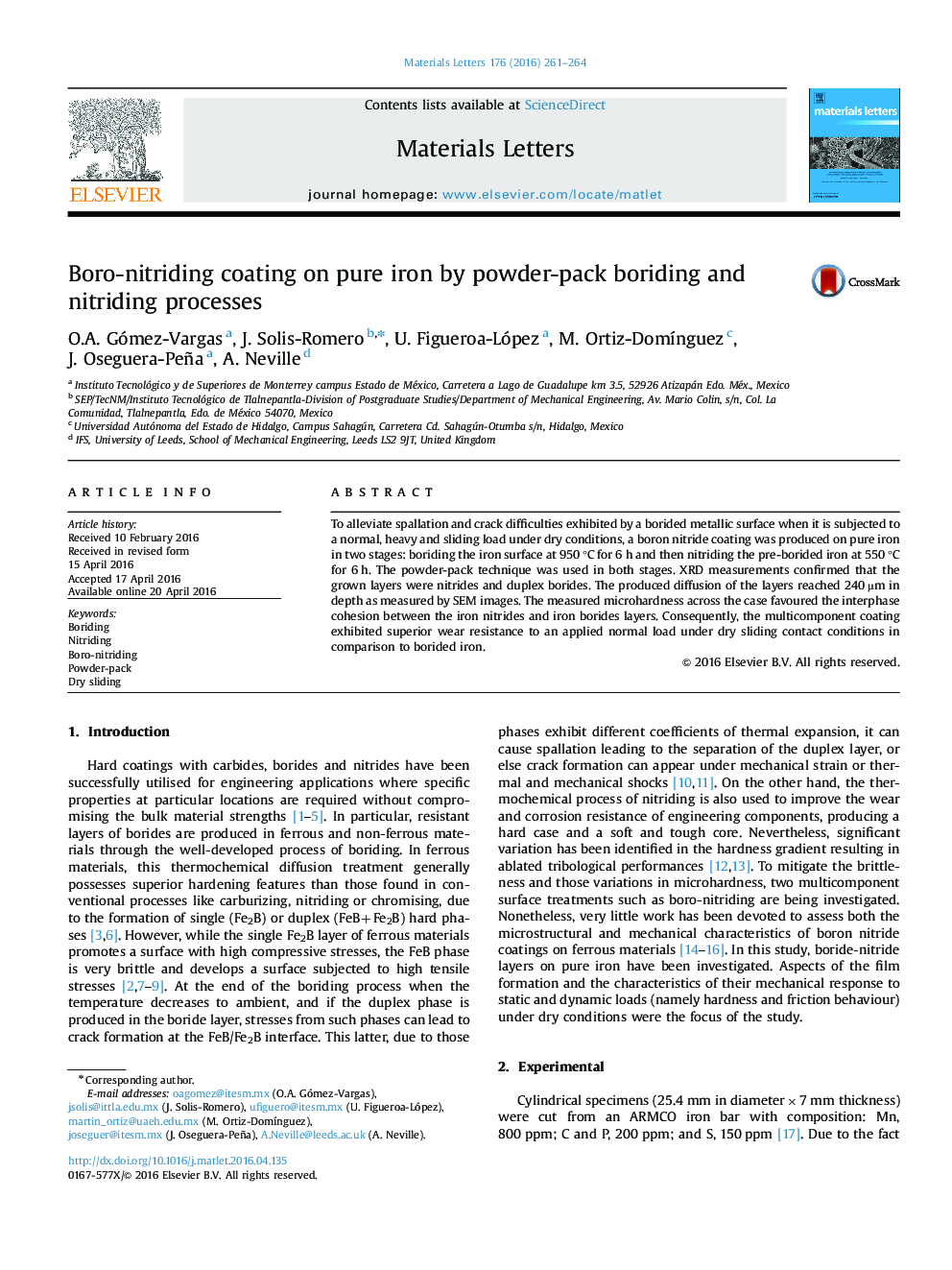| Article ID | Journal | Published Year | Pages | File Type |
|---|---|---|---|---|
| 1641378 | Materials Letters | 2016 | 4 Pages |
•Boro-nitriding was successfully carried out by using the power pack technique.•The iron nitride layer on the boride layer was flat, compact and well adhered.•Microhardness gradient of the produced layers favoured the tribological performance.•The multicomponent exhibited superior wear resistance compared to a boriding process.
To alleviate spallation and crack difficulties exhibited by a borided metallic surface when it is subjected to a normal, heavy and sliding load under dry conditions, a boron nitride coating was produced on pure iron in two stages: boriding the iron surface at 950 °C for 6 h and then nitriding the pre-borided iron at 550 °C for 6 h. The powder-pack technique was used in both stages. XRD measurements confirmed that the grown layers were nitrides and duplex borides. The produced diffusion of the layers reached 240 µm in depth as measured by SEM images. The measured microhardness across the case favoured the interphase cohesion between the iron nitrides and iron borides layers. Consequently, the multicomponent coating exhibited superior wear resistance to an applied normal load under dry sliding contact conditions in comparison to borided iron.
